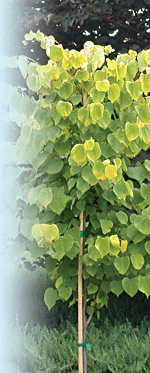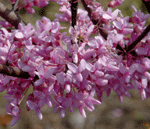Redbud ‘Hearts of Gold’ a Striking Tree With N.C. Roots
go.ncsu.edu/readext?232824
en Español / em Português
El inglés es el idioma de control de esta página. En la medida en que haya algún conflicto entre la traducción al inglés y la traducción, el inglés prevalece.
Al hacer clic en el enlace de traducción se activa un servicio de traducción gratuito para convertir la página al español. Al igual que con cualquier traducción por Internet, la conversión no es sensible al contexto y puede que no traduzca el texto en su significado original. NC State Extension no garantiza la exactitud del texto traducido. Por favor, tenga en cuenta que algunas aplicaciones y/o servicios pueden no funcionar como se espera cuando se traducen.
Português
Inglês é o idioma de controle desta página. Na medida que haja algum conflito entre o texto original em Inglês e a tradução, o Inglês prevalece.
Ao clicar no link de tradução, um serviço gratuito de tradução será ativado para converter a página para o Português. Como em qualquer tradução pela internet, a conversão não é sensivel ao contexto e pode não ocorrer a tradução para o significado orginal. O serviço de Extensão da Carolina do Norte (NC State Extension) não garante a exatidão do texto traduzido. Por favor, observe que algumas funções ou serviços podem não funcionar como esperado após a tradução.
English
English is the controlling language of this page. To the extent there is any conflict between the English text and the translation, English controls.
Clicking on the translation link activates a free translation service to convert the page to Spanish. As with any Internet translation, the conversion is not context-sensitive and may not translate the text to its original meaning. NC State Extension does not guarantee the accuracy of the translated text. Please note that some applications and/or services may not function as expected when translated.
Collapse ▲
Cercis canadensis ‘Hearts of Gold’
JC Raulston Arboretum ©
The native eastern redbud, Cercis canadensis, is one of the first trees to flower in North Carolina. Its purple flowers adorn woodland edges and disturbed roadside habitats. The foliage is heart shaped and appears soon after flowering. The redbud is an excellent small tree—it grows 20 to 30 feet tall—and performs well in full sun or light shade. Redbud will tolerate a wide range of soil types, although soils near neutral pH are preferred. It requires well-drained soils, and is drought tolerant once established. Redbud can be difficult to establish, however, particularly bare-rooted trees. Small potted plants are the easiest to establish and late fall to early spring dormant planting is best. Because redbud has a very shallow root system, planting trees at the proper depth is critical for best performance and survival.
Redbud often begins growing as a multi stemmed plant. Early removal of all but one center stem will encourage the typical tree form and will avoid the problem of narrow crotches that split from winds or ice. Other than early shaping and trimming off crossing or rubbing branches, the redbud needs little pruning.

Cercis canadensis ‘Hearts of Gold’
JC Raulston Arboretum©
‘Hearts of Gold’ is a new cultivar discovered by former JC Raulston Arboretum employee Jon Roethling in a North Carolina landscape. This outstanding and unique form of our eastern redbud is distinguished by its striking, intense golden-yellow spring foliage that gradually changes to chartreuses as the summer advances. The light purple flowers are plentiful in each cluster. The actively growing shoot tips take on an orange-red tone, making a distinct contrast to the older, chartreuse-colored leaves. ‘Hearts of Gold’ will express its gold color more effectively in full sun. It is a small redbud, only reaching a height of 12 to 15 feet after five years of growth. With its small stature, golden heart-shaped leaves and tidy canopy, this redbud makes a wonderful small tree for groupings near the edge of natural woodland settings or as a single specimen.
‘Oklahoma,’ another popular cultivar, is a 2008 Showstopper Plant.


